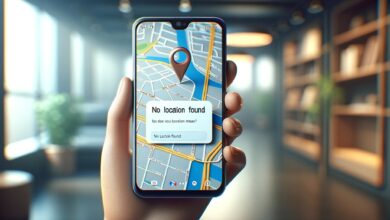The Role of Technology in Graphic Design: How Software and Tools Are Changing the Game

Do you know? Around 40,000 years ago people started their hands on graphics. The cave paintings are the most prominent examples of the rich history of graphic design. They used images and created visual forms of stories. Comparing those paintings with what we now get as an output of WordPress web designers is indeed a significantly developed form. The credit goes to technological advancement, rather than directly to the mastermind behind this. Let’s explore how new tools are changing the act of graphic designing.
Streamlining the creative process
Those days are gone when intensive manual design techniques were used to create designs, now technology has entered a new era of efficiency and speed in graphic design. Softwares like Adobe Creative Cloud, CorelDRAW, and Sketch provide designers with various digital tools that simplify complex tasks and trim the creative process. Features like drag-and-drop functionality, layering, and undo/redo options have become crucial, allowing designers to experiment, repeat, and purify their work with ease.
Moreover, the rise of intuitive user interfaces and responsive design capabilities has made collaboration between designers and clients more seamless. Immediate feedback and remote collaboration tools enable designers to share their work instantaneously, receive timely input, and make necessary adjustments in real time. This not only saves time but also facilitates a more iterative and collaborative approach to design.
Pushing Boundaries of Creativity
Technology has increased the creative horizons of graphic designers, providing them with an excess of tools and techniques to develop. The invention of 3D modeling and rendering software has opened up a whole new world for designers to experiment with. They can now create astonishing visual effects, humanlike animations, and mesmerizing virtual environments that people once kept as a wish for the Lamp of Aladdin.
Typography
Advancements in typography software have permitted designers to push the boundaries of typography, creating unique and expressive cases that convey emotion and meaning. Tools like FontLab allow designers to customize every aspect of a font, from letterforms to ligatures, resulting in typographic designs that are impactful and visually appealing.
Innovation
The meshing of artificial intelligence (AI) and machine learning in graphic design has introduced a new level of automation and innovation. Design software can now analyze data, generate design recommendations, and create layouts based on user inputs. AI tools like Adobe Sensei and Canvas Magic Resize automate tasks, empowering designers for greater creativity.
Enhancing User Experience
In today’s digital age, user experience (UX) design has become paramount, and technology has a vital role in providing rare user experiences. Interactive prototyping tools like InVision allow designers to simulate user interactions, test usability, and critique before finalizing a design. This approach saves time, reduces costs, and ensures that the end product meets the needs and expectations of users.
Moreover, the rise of virtual reality (VR) has provided designers with new avenues to engage users on a deeper level. VR app experiences create immersive environments that blend the digital and physical worlds, enabling designers to craft unforgettable brand experiences and narratives.
The Scope of Designing
There are millions of companies in the world and each company desires a unique design for its logo/website. For such results, there is a need for thorough research to achieve the desired outcome. Is no logo-checking tool available? Research the company’s objectives, morals, and industry trends for a unique logo. The scope of designing, in first hand, seems simple but the reviewing and redesigning is yet a complex task. Harnessing technological advancements, programs and apps transform designs into unique and vibrant products that reflect our imagination.
3D Design and Augmented Reality
Developments in technology have also given rise to 3D design and augmented reality experiences. Designers can now create multi-dimensional objects, environments, and animations using Blender software. This opens a new dimension of possibilities for designers, allowing them to create interactive experiences and visuals.
AR has also gained traction in graphic design, with the ability to overlay digital content in the real world. From virtual try-on experiences to interactive product packaging, AR is transforming how brands communicate with their audience. It adds an element of interactivity and engagement that traditional static designs cannot match.
Automation and Artificial Intelligence
The integration of automation and artificial intelligence (AI) into graphic design tools has expedited various aspects of the design process. AI-powered algorithms can analyze images, recognize patterns, and suggest design elements or improvements. Technology streamlines design tasks, freeing designers to concentrate on creativity rather than meticulous details.
Automation also plays a significant role in streamlining repetitive tasks such as resizing images, generating templates, or preparing files for print. Designers can now create design systems that automatically adapt to various formats, making maintaining consistent branding across different platforms easier.
Collaboration made Easy
Another aspect where technology has transformed graphic design is collaboration. Traditionally, designers would work in isolation or communicate via physical prototypes and sketches. However, the association has become seamless with the rise of cloud-based tools and platforms. Designers can now share their work the instant they start to get started, receive instant feedback, and collaborate with team members or clients from different locations. This helps each designer to design according to the demands and edit where there is a need before ending a project which saves time and effort.
Online platforms like Figma and Adobe Creative Cloud allow designers to work together on the same project simultaneously. This level of collaboration speeds up the design process and fosters a more inclusive and diverse design community.
Conclusion
Every new invention is an addition to the ease provided for people like Figma web design services where people work for immersive outputs on websites using digital technologies. Apps and services of this kind provide ease and consume less time and the outcomes are as great as expected. Graphic designing is a developing field and technological advances are helping to widen its reach.




